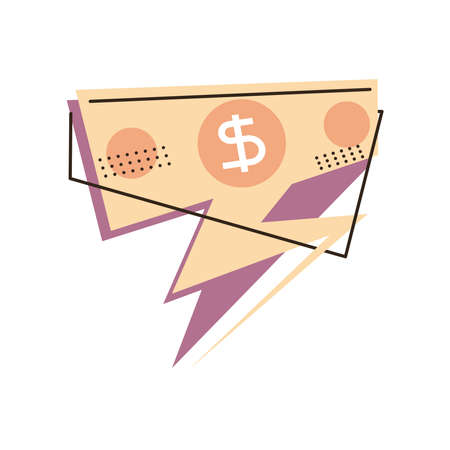Understanding Emergency Funds
Emergency funds are a critical component of financial planning for American households. At their core, emergency funds are savings set aside specifically to cover unexpected expenses or financial emergencies. These could range from sudden medical bills, urgent home repairs, or a job loss—situations where quick access to money can make a significant difference. In the U.S., having an emergency fund is considered essential because it acts as a financial safety net, helping families avoid debt or high-interest loans when faced with unforeseen costs. The typical recommendation is to have enough saved to cover three to six months worth of living expenses, ensuring that individuals and families can weather most common emergencies without derailing their long-term financial goals.
Cash on Hand: Pros and Cons
When building an emergency fund, many Americans debate whether to keep physical cash at home or rely solely on digital options. Keeping cash on hand has both benefits and drawbacks, especially when considering factors such as immediate accessibility, inflation, theft risk, and U.S. cultural attitudes toward cash.
Immediate Accessibility
One of the main advantages of holding physical cash is instant access during emergencies like power outages, natural disasters, or network failures that may render ATMs and card payments useless. Cash ensures you can pay for essential items like groceries, gas, or lodging even if electronic systems are down.
Inflation Risk
A significant downside to storing cash is its vulnerability to inflation. Over time, the purchasing power of cash decreases as prices rise. Unlike funds kept in high-yield savings accounts, physical dollars do not earn interest or keep pace with inflation rates.
Theft and Security Risks
Physical cash is susceptible to theft, loss, or damage from events such as fires or floods. Unlike money stored in federally insured bank accounts—which are protected up to $250,000 by the FDIC—cash at home has no such safety net.
Cultural Attitudes Toward Cash in the U.S.
In recent years, American culture has shifted toward digital payments and cards for convenience and security reasons. However, a segment of the population still values having some cash available for privacy or peace of mind. The COVID-19 pandemic highlighted the importance of having multiple payment options during periods of uncertainty.
Summary Table: Pros and Cons of Keeping Cash on Hand
| Factor | Pros | Cons |
|---|---|---|
| Accessibility | Immediate use during emergencies | Limited utility if lost or stolen |
| Inflation | No direct impact short-term | Loses value over time; no interest earned |
| Theft/Security | No reliance on banks or networks | Easily stolen or destroyed; not insured by FDIC |
| Cultural Attitudes | Satisfies desire for financial independence | Seen as outdated by some; less accepted in some stores |
Ultimately, the decision to keep cash on hand should factor in personal comfort levels with risk versus convenience and align with broader financial planning strategies within the American context.

3. Relying on Credit and Debit Cards
In today’s digital age, credit and debit cards have become the go-to tools for handling everyday transactions, and many Americans rely on them as a key component of their emergency fund strategy. The primary advantage of using cards in emergencies is convenience. Whether you’re stranded with car trouble or faced with unexpected medical bills, cards allow quick access to your funds without the need to carry large amounts of cash. Most merchants accept cards, and mobile payment solutions like Apple Pay or Google Wallet add another layer of accessibility.
Another benefit is digital record-keeping. Every transaction is automatically documented, making it easier to track your spending during stressful situations. This can be particularly useful for budgeting and for insurance claims when you need proof of expenses.
However, relying exclusively on cards isn’t risk-free. One major drawback is the potential for overspending. In high-stress scenarios, swiping a card feels less tangible than handing over cash, which can lead to unintentional debt accumulation—especially if you’re using credit instead of debit. Interest rates on unpaid credit card balances can quickly turn an emergency expense into a long-term financial burden.
There are also practical limitations during power outages or network failures. Natural disasters like hurricanes or wildfires can disrupt electronic payment systems, leaving cardholders unable to access funds exactly when they need them most. While banks often offer ATM withdrawals as a backup, these machines may also be down during widespread outages.
In summary, while cards provide unmatched convenience and digital tracking for emergency spending, it’s crucial to recognize the risks: increased temptation to overspend and vulnerability during technical disruptions. A balanced approach that considers both digital and physical forms of emergency funds is often the safest bet for American households.
4. Practical Scenarios: Cash vs. Cards in American Emergencies
When it comes to emergencies in the United States, the practicality of cash versus cards often depends on the situation at hand. Lets break down common real-world scenarios where one may have a clear advantage over the other, based on recent data and firsthand experiences.
Natural Disasters: Hurricanes, Tornadoes, and Wildfires
Natural disasters can knock out power grids and disable electronic payment systems for days or even weeks. During events like Hurricane Katrina or recent California wildfires, ATMs and card readers were frequently offline. In these cases, having physical cash is critical for purchasing essentials like gas, groceries, and water from local stores that may only accept cash during outages.
Widespread Power or Network Outages
The U.S. infrastructure is vulnerable to cyberattacks and large-scale blackouts. For example, the 2021 Texas winter storm left millions without electricity, causing digital payment systems to fail across entire regions. Cash quickly became the only viable option for urgent purchases when electronic payments stalled.
Unexpected Expenses: Medical Bills & Car Repairs
For sudden expenses like emergency room visits or urgent car repairs, credit cards are typically preferred due to high transaction amounts and the ability to pay over time. Many American hospitals and auto shops accept cards around the clock, providing flexibility when you don’t have enough cash on hand.
Comparison Table: When Is Cash or Card Better?
| Scenario | Cash Advantage | Card Advantage |
|---|---|---|
| Power Outage/Natural Disaster | ✔ Essential for small/local transactions when systems are down | |
| Medical Emergency (Hospital) | ✔ High acceptance; allows deferred payments; larger limits | |
| Car Breakdown/Repair Shop | ✔ Widely accepted; covers high costs instantly | |
| Travel Disruption (e.g., Stranded at Airport) | ✔ Useful for tips, vending machines, some taxis | ✔ Hotel bookings, flight changes, most retailers accept cards |
| Civil Unrest (ATM/card access blocked) | ✔ Only means to transact if banks/ATMs are inaccessible | |
| Everyday Minor Emergencies (locked out, need a quick meal) | ✔ Some local vendors only take cash | ✔ Quick digital payments via phone/cards in urban areas |
The Bottom Line for Americans:
No single solution fits all emergencies. In the U.S., keeping a modest amount of cash—enough to cover several days of basic needs—is wise for disaster scenarios. However, credit/debit cards offer flexibility and security for larger or unplanned expenses when infrastructure is intact. Combining both options ensures true resilience against a wide range of American emergencies.
5. How Much Cash Should You Keep?
Determining the right amount of cash to keep at home is a classic question for Americans balancing security, convenience, and risk management. Financial experts generally recommend keeping enough cash to cover basic living expenses for three days to one week in case of emergencies like power outages, natural disasters, or temporary banking disruptions. According to a 2023 Federal Reserve survey, over 80% of U.S. consumers use electronic payments for everyday transactions, but nearly 40% still carry some cash as a backup.
Expert Guidelines
The Consumer Financial Protection Bureau (CFPB) suggests storing between $200 and $500 in small bills at home for immediate needs such as groceries, gas, or temporary lodging. This range accounts for most Americans average daily spending patterns while minimizing loss risk from theft.
Local Risk Factors
Your ideal cash reserve should also reflect local risks. For example, residents in hurricane- or wildfire-prone areas may benefit from keeping closer to one week’s worth of expenses in cash—often $1,000–$2,000 per household—since ATMs and card readers can go offline during disasters. Urban dwellers with easy access to open businesses may need less, while those in rural locations with limited services might require more.
Balancing Liquidity and Security
Financial planners advise against hoarding large sums at home due to theft risk and lack of FDIC insurance. Use a fireproof, waterproof safe and avoid telling others about your emergency stash. Review your emergency plan annually and adjust your cash holdings based on changes in family size, location-specific threats, or shifts in banking access.
6. Finding the Right Balance for Your Emergency Fund
Striking the optimal balance between cash and cards in your emergency fund is all about risk management and practicality, especially when viewed through the lens of American financial habits. Most U.S. financial advisors recommend a layered approach: keep enough physical cash on hand to cover immediate essentials—think groceries, gas, or a few days’ lodging—should digital payment systems go down. Typically, this means setting aside $200 to $500 in small bills, easily accessible but safely stored at home.
For larger or prolonged emergencies, debit and credit cards provide security and flexibility. Cards are widely accepted across the U.S., offer fraud protection, and make it easier to track expenses during a crisis. Many Americans also benefit from credit card rewards or purchase protections, which can be valuable if you face unexpected repairs or travel disruptions.
The logical split often recommended by financial planners is roughly 10–20% of your emergency fund in cash and 80–90% in bank accounts linked to debit or credit cards. This ratio can be adjusted based on personal risk tolerance, local disaster risks (such as hurricanes or earthquakes that might disrupt power), and your comfort with digital banking.
For best results, review your emergency plan annually. Consider how quickly you could access funds in different scenarios, double-check that your cash reserve remains secure yet available, and ensure your cards are active with up-to-date contact information. By diversifying your emergency reserves between cash and cards, you combine the immediate reliability of cash with the convenience and security features of modern banking—a strategy perfectly aligned with American risk management principles.


